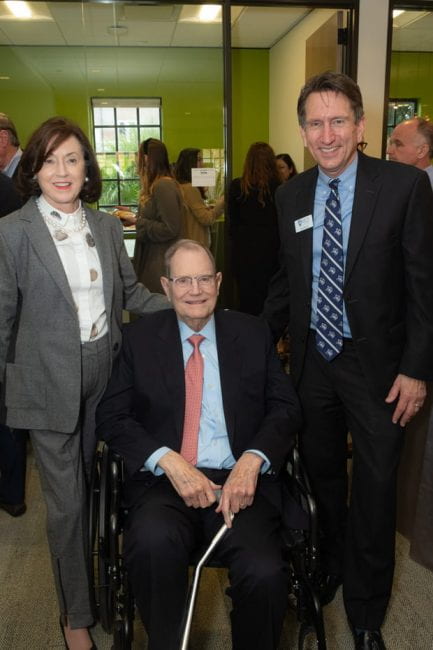3 Houston innovators to know this week
In this Monday roundup of Houston innovators, we traverse into the restaurant, health care, and higher education industries with a startup founder focused on using technology to improve the dining experience, a self-starter in health care, and a leader on the Rice University campus with a new office.
Applications now open for Napier Rice Launch Challenge
Students and recent alums with “million-dollar ideas” are invited to apply for the Liu Idea Lab for Innovation and Entrepreneurship’s business idea competition. Applications for the 2020 H. Albert Napier Rice Launch Challenge (NRLC) Startup Competition will be accepted through 11:59 p.m. Jan. 20.
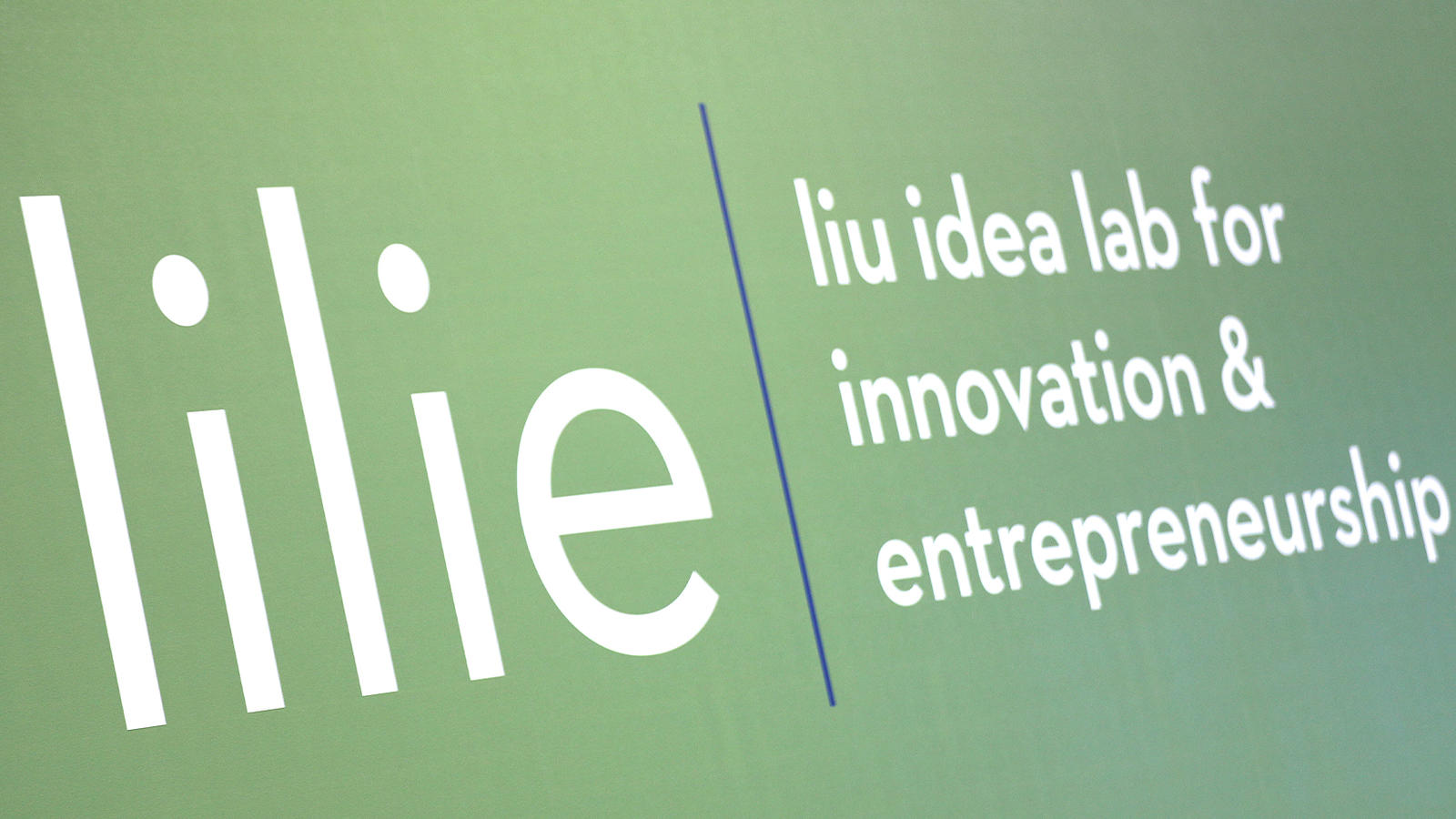
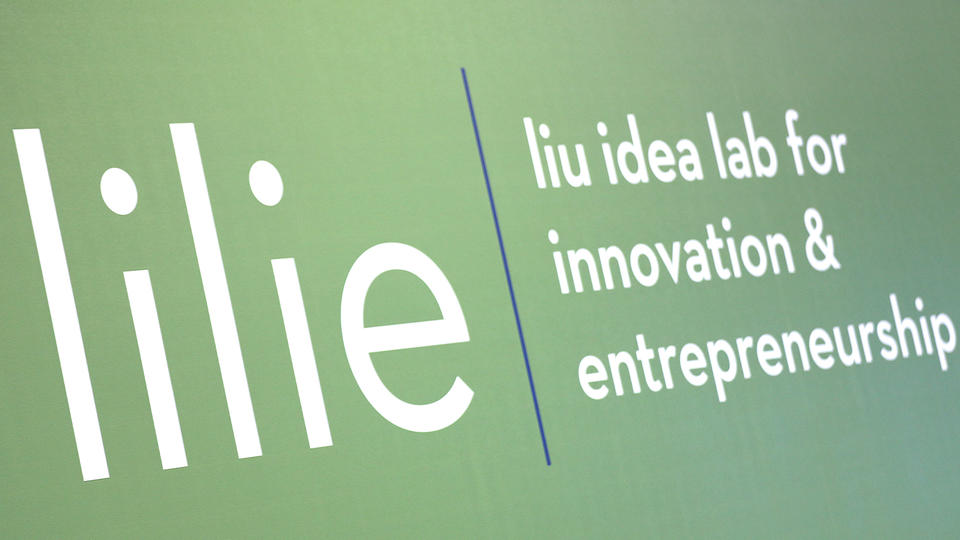
Students and recent alums with “million-dollar ideas” are invited to apply for the Liu Idea Lab for Innovation and Entrepreneurship’s business idea competition.
Applications for the 2020 H. Albert Napier Rice Launch Challenge (NRLC) Startup Competition, which will award Rice-affiliated teams with $60,000 in prize money, will be accepted through 11:59 p.m. Jan. 20. Finalists, who will be announced Jan. 29, must submit a second application by Feb. 9. The top proposals will be announced Feb. 14, and final presentations will be given March 25.
At least one member of each team must be a current Rice student or an alum who has graduated in the last five years. The team member affiliated with must be an active contributing member to the team serving beyond an advisory role and must give the final presentation if selected as a finalist.
The competition is funded in part by a donation from Dacia and Lanham Napier and is named for Lanham’s father, Al Napier, one of the founders of the globally recognized entrepreneurship program at Rice’s Jones Graduate School of Business.
Al Napier, professor emeritus of entrepreneurship and psychology, retired in 2017. He began teaching at Rice Business in 1982 and, together with the late Edward Williams, professor emeritus of entrepreneurship, is credited with introducing students to entrepreneurial skills through experience-based learning long before the academic discipline of entrepreneurship had been established and before most universities were teaching the subject.
Today, Rice Business has the No. 1 graduate entrepreneurship program in the U.S. according to rankings by the Princeton Review and Entrepreneur magazine, and the school offers more than 30 courses taught by professors with significant entrepreneurial experience.
Over the past decade, alumni have created 535 businesses and raised $7.1 billion in funding, according to the school’s surveys. More than 80% of those companies are still operating.
The Liu Idea Lab for Innovation and Entrepreneurship (Lilie) is a cross-disciplinary initiative to provide students from across the university with an entrepreneurial mindset, which is increasingly critical to success. Lilie features a coworking space for students, entrepreneurship courses and a variety of co-curricular activities and resources supporting Rice students in entrepreneurial endeavors.
Contact Emily Messenger at emm12@rice.edu with questions about the application process or event.
Rice Business Plan Competition alumni make Forbes 30 Under 30 list
The Rice Business Plan Competition, the world’s richest and largest student venture competition, had six of its recent alumni startups featured on the Forbes 30 Under 30 list for 2020, an annual compilation of the most innovative and exciting young entrepreneurs in the United States and Canada.
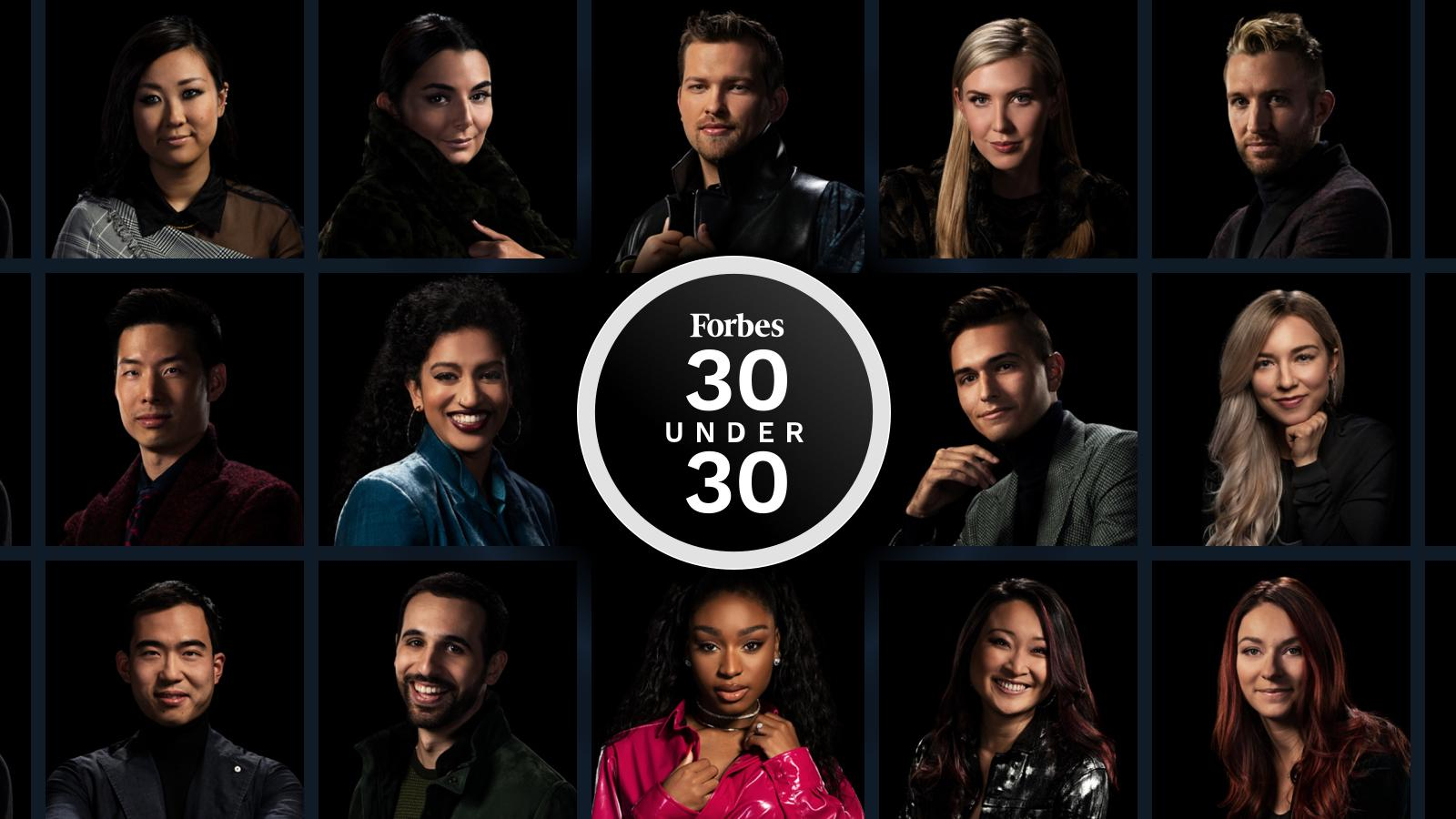
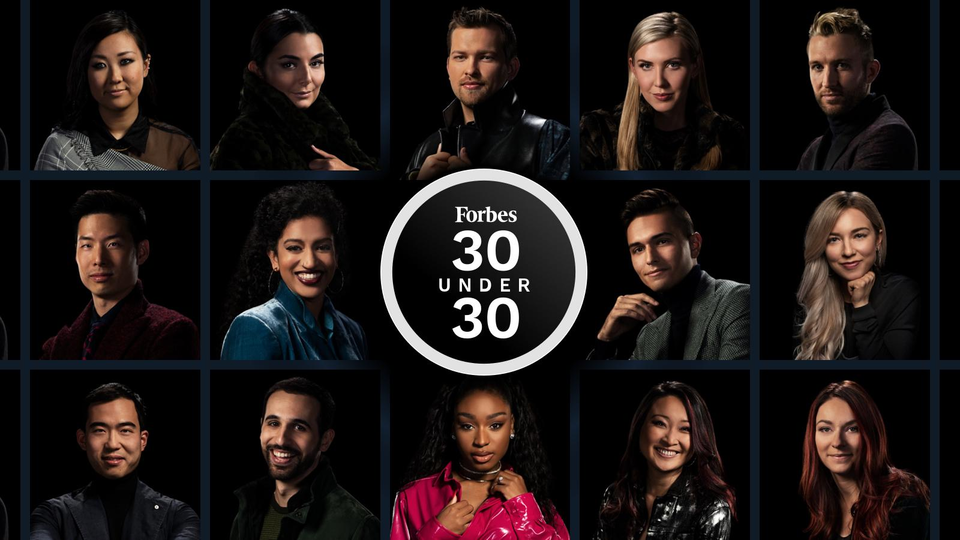
The Rice Business Plan Competition, the world’s richest and largest student venture competition, had six of its recent alumni startups featured on the Forbes 30 Under 30 list for 2020, an annual compilation of the most innovative and exciting young entrepreneurs in the United States and Canada.
Vita Inclinata was the top prize winner in the 2019 RBPC, winning a total of $550,000 from the competition and local investors. spotLESS Materials and Rhaeos were overall third and fourth place, respectively, and AeroShield and EnKoat, both cleantech companies, placed in the semifinal round.
A competitor from 2018, Sanguina (formerly Lunula Health), was also included in the list.
“I am thrilled that our alumni startups are being recognized for their achievements and that the RBPC has been a part of their entrepreneurial journey,” Santamaria said.
The RBPC is hosted annually at Rice’s Jones Graduate School of Business.
Applications for the 2020 Rice Business Plan Competition, to be held March 26-28, are now open. Any interested graduate student startups are welcome to apply. Eligibility requirements are at www.rbpc.rice.edu.
About the Rice Business Plan Competition
The Rice Business Plan Competition is the world’s richest and largest student startup competition. Forty-two startups from across the globe compete in front of over 300 investor and industry judges. The competition awarded more than $2.9 million in prizes in 2019 and is supported by more than 140 corporate, government and investor sponsors. Over the life of the competition, now in its 20th year, participating teams have successfully launched 229 companies and raised more than $2.3 billion in funding.
The RBPC is one of the many entrepreneurship programs offered by the Rice Alliance for Technology and Entrepreneurship, one of the country’s premier initiatives devoted to the support of technology commercialization, entrepreneurship education and the launch of technology companies. The Rice Alliance is led by managing director Brad Burke.
Since its founding, the Rice Alliance’s activities have benefited more than 2,400 startups that have raised more than $8 billion in funding. Over 52,000 investors and corporate and industry leaders have participated in Rice Alliance in Technology Venture Forums in energy and clean tech, digital technology and life sciences, and other programs.
Rice Business, home to the Rice Alliance, has the No. 1 graduate entrepreneurship program in the U.S., according to the 2020 rankings announced Nov. 12 by the Princeton Review and Entrepreneur magazine.
To Do Or Not To Do
How mindful should you really be?


Based on research by Erik Dane
How Mindful Should You Really Be?
- A cascade of literature attests to the power of mindfulness on performance.
- But the benefits of mindfulness depend on context.
- Because different aspects of mindfulness have built-in limitations, the practice can actually backfire in the wrong settings.
Much has been written in academic literature, the press and the media about the miracle of mindfulness. The benefits are said to range from simply feeling better to measurably doing better at work. Companies around the world have taken note: Cisco, Accenture and Microsoft, among others, have signed employees up for mindfulness training, and their managers have rhapsodized about the effects of digital-free brainstorming or “to be” lists.
It’s not just a fad. Being more mindful, the literature shows, improves decision making. It helps us spot and circumvent risks or problems, and because it broadens perspective, it helps muffle internal bias, empowering us to see things from different angles. Former Rice Business Professor Erik Dane agrees with all this, but wants you to bear something in mind: Mindfulness has limits.
In a recent article, Dane outlined a range of circumstances in which mindfulness can actually erode performance. Reviewing a broad spectrum of recent research, including his own, Dane divided mindfulness into three key components: being in the moment, being aware of internal as well as external stimuli, or “phenomena,” and being open and accepting. While each component offers clear benefits, there are also limits to their usefulness.
Consider, for example, the concept of focusing on the present. With high-risk, complex or volatile jobs or work settings, it’s critical to watch closely as events unfold in real time. On the other hand, during periods of downtime — even in these same jobs — the opposite is arguably true.
Recent research shows the benefits of switching off and allowing the mind to wander, Dane notes. Daydreaming is a strong driver of creativity, a chance to ponder semi-completed or pending tasks and to plan for the future. When we’re doing routine or ceremonial jobs, or traveling from one appointment to the next, what Dane calls “mind-wandering” can actually enhance performance, especially for those people who need to manage multiple assignments or lead innovation within an organization.
Then there is the second tenet of mindfulness: a combined focus on external and internal stimuli. In his own research, Dane has explored how this dual focus leads to greater breadth of attention — an asset for the likes of trial lawyers, university professors and others whose jobs involve integrating cues and inputs from an array of sources. A litigation attorney, for instance, needs to simultaneously process the responses of witnesses and jury members, while a professor needs to balance the progress of her lecture with feedback from her students.
But what about when the lawyer needs to prepare case documents or courtroom exhibits? Or when the professor is marking her students’ exam papers? In these instances, Dane argues, a single-minded focus — free of pesky distractions — improves the ability to perform the task at hand.
Similarly, Dane argues, the third tenet of mindfulness — being open and accepting — can sometimes be less useful than being judgmental. Citing research into what he calls “moral judgments,” a type of decision that plays a key role in social or organizational settings, Dane notes that such judgments arise from experience. Switching them off through mindfulness practices may not only be difficult to do — it may squelch valuable, real-life insight.
This doesn’t mean we should strive any less to understand or empathize with others. But, Dane says, it’s worth recalling that judgments carry “information distilled through experience and serve notice that discipline, training or mentoring may be needed.”
Embracing mindfulness as a blanket approach, in other words, is unlikely to change your performance across the board. Just be mindful, Dane advises, about when, where and how to cut your thinking loose — and act.
Erik Dane is a former professor and was the Distinguished Associate Professor of Management (Organizational Behavior) at Jones Graduate School of Business at Rice University.
To learn more, please see: Dane, E. (2015). Mindfulness and performance: Cautionary notes on a compelling concept. Industrial and Organizational Psychology: Perspectives on Science and Practice, 8, 247-252.
Never Miss A Story
Keep Exploring
Companies investing abroad must weigh geographic, cultural distances, says new Rice U. study
A key decision companies face when expanding overseas is where to set up shop. Although businesses generally refrain from expanding to geographically and culturally distant countries, the importance of such considerations varies based on a company’s size and adaptability.


A key decision companies face when expanding overseas is where to set up shop. Although businesses generally refrain from expanding to geographically and culturally distant countries, the importance of such considerations varies based on a company’s size and adaptability.
New research focused on Chinese companies conducted by Rice University strategic management expert Yan “Anthea” Zhang and colleagues shows foreign countries that seem to be good fits in terms of geographic distance may be cultural misfits, and vice versa.
Larger, older and state-owned companies are better positioned to absorb additional operating costs such as travel and transportation, but they’re less adaptable to foreign countries’ local environments than smaller, younger and non-state-owned companies. The researchers found the former are less deterred by geographic distance than the latter.
“We propose that size, age and ownership play paradoxical roles in how firms evaluate locations in their foreign direct investments location choices,” wrote Zhang and co-authors Yu Li of the University of International Business and Economics in Beijing and Wei Shi of the University of Miami’s Herbert Business School. “We test these arguments in the context of Chinese firms’ international expansion. Chinese firms, supported by a large home market, have recently become an important source of foreign direct investments.”
The study will be published in the Strategic Management Journal.
Using a large sample of Chinese companies’ foreign direct investment location choices between 2001 and 2013, the researchers found strong support for their theoretical arguments.
Far away locations may be less of an issue for larger, older and state-owned companies, but high organizational inertia can make them less adaptable to “culturally distant” hosts, the researchers said. Accordingly, cultural distance would be less concerning for smaller, younger and non-state-owned companies making foreign direct investment location decisions.
“Our study shows that firm size, firm age and state ownership can affect foreign direct investment location choices because these firm attributes are associated with distinct capabilities to cope with geographic and cultural distances,” the authors wrote.
“In addition, our findings have important practical implications for managers of firms that are new to international expansion yet aspire to go global,” they wrote. “Our findings can improve their understanding of how geographic distance and cultural distance may differentially affect their foreign direct investment location choices, so that they can better assess their firms’ relative advantages and disadvantages in dealing with various challenges in international expansion.”
Zhang is professor and the Fayez Sarofim Vanguard Chair of Strategic Management at Rice’s Jones Graduate School of Business.
For a copy of the study, “Navigating Geographic and Cultural Distances in International Expansion: The Paradoxical Roles of Firm Size, Age and Ownership,” email jfalk@rice.edu.
For more information about and insights from Rice Business faculty research, visit the school’s Rice Business Wisdom website, https://business.rice.edu/wisdom.
Follow Rice Business via Twitter @Rice_Biz.
Follow Rice News and Media Relations via Twitter @RiceUNews.
Related materials:
Zhang bio: https://business.rice.edu/person/yan-anthea-zhang
Rice Alliance unveils new offices
The Rice Alliance for Technology and Entrepreneurship, one of the country’s premier initiatives devoted to the support of technology commercialization, entrepreneurship education and the launch of technology companies, hosted a special event Dec. 5 to unveil its new offices, the 3,000-square-foot Bill and Stephanie Sick Suite.
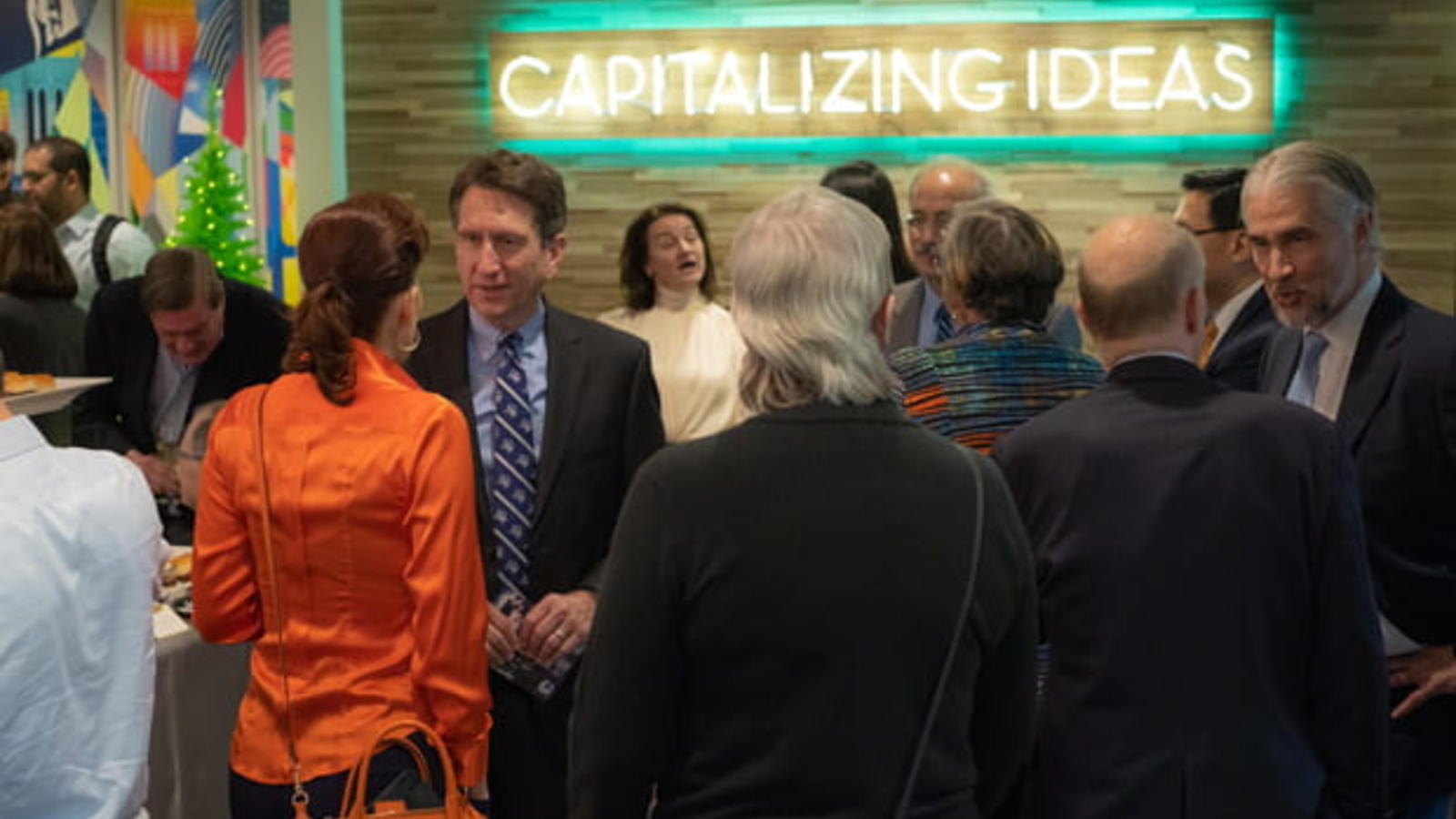
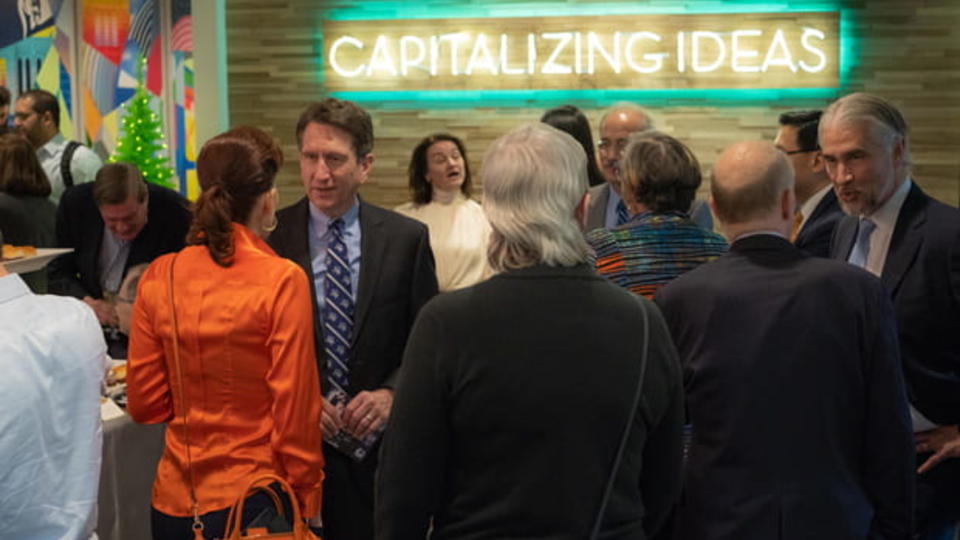
The Rice Alliance for Technology and Entrepreneurship, one of the country’s premier initiatives devoted to the support of technology commercialization, entrepreneurship education and the launch of technology companies, hosted a special event Dec. 5 to unveil its new offices, the 3,000-square-foot Bill and Stephanie Sick Suite.
Located on the first floor of McNair Hall, the home of Rice’s Jones Graduate School of Business, the space was made possible through a $1 million gift by Rice engineering alumnus William “Bill” Sick and his wife, Stephanie. Bill Sick was one of the first supporters and mentors to the Rice Alliance during the organization’s formation in 2000.
Speakers included Rice President David Leebron, Rice Business Dean Peter Rodriguez and Rice Alliance Managing Director Brad Burke, who is pictured below with Bill and Stephanie Sick.
Also in attendance were Reginald DesRoches, Rice’s William and Stephanie Sick Dean of Engineering, and Rice Vice Provost for Research Yousif Shamoo.
(Photos by Jeff Fitlow)
Foreign Exchange
What can firms in emerging markets learn from foreign investors?

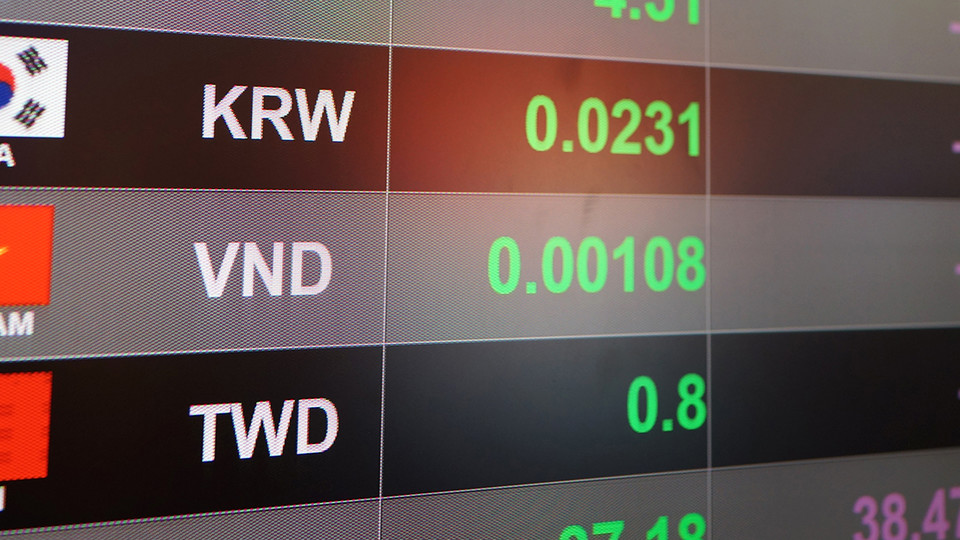
Based on research by Haiyang Li, Xiwei Y and Geng Cui
What Can Firms In Emerging Markets Learn From Foreign Investors?
- Emerging markets such as China are increasing their outbound foreign direct investment.
- Inbound foreign investment can help firms by boosting knowledge.
- Firms looking to expand globally need to ensure that their organizational resources are adaptable to new markets.
When foreigners invest in emerging markets, the prospect for those markets’ local businesses looks bright. The payoffs for a country’s companies can range from injections of foreign capital to better managerial talent, technological sophistication and international know-how. But does foreign investment ever push local firms to venture into international projects of their own?
Rice Business professor Haiyang Li looked closely at the ripple effects of foreign investments, and concluded it all depends on the local businesses’ adaptability. That — and their appetite for risk.
Together with Xiwei Yi of Peking University and Geng Cui of Lingan University, Hong Kong, Li launched a large-scale study of Chinese manufacturers to better understand how multinational investment in domestic companies influences the global market.
The subject was ripe for analysis. Over the past decade, more and more companies in China and other emerging markets have been testing the waters of direct investment in other countries in sectors as varied as food and beverages, apparel, electronics and transportation equipment.
Li’s team hypothesized that these emerging market companies were leveraging benefits that foreign investment had ferried into their home markets. This investment, the researchers theorized, had brought in useful resources and skills, which helped ease the local companies into international business markets.
To confirm this, the team needed to test whether the converse was true: Might information gained from foreign investors actually dull a local firm’s interest in branching out overseas? Maybe the risks of that type of venture — which are higher for firms in emerging markets — would seem too stark.
To find out, the researchers first vetted the literature on inward and outward investment activities. How, they wanted to know, did domestic firms interact with foreign players in the technology or product importing process? In equipment manufacturing? In franchising and licensing, mergers and acquisitions and activities such as setting up subsidiaries?
Working with a global research company, Li and his colleagues next surveyed 1,500 Chinese businesses in the food, clothing, electronics and vehicle industries. (Firms in finance, banking, natural resources and business services were ruled out because of their government ties, and also because such organizations usually use fewer resources, which made them harder to evaluate.)
Each company that took part in the survey rated how much they engaged with foreign investors in activities such as importing products and services or forming joint ventures. They also indicated if dealing with foreign direct investment had brought them foreign capital, advanced manufacturing know-how, managerial experience or competitive insight into overseas business.
The researchers also measured the “fungibility” of these firms’ resources — in other words, how easily could their organizational, cultural and technological resources be adapted to various geographical settings?
Finally, managers rated how risk-prone they thought their firms were.
After Li and his coauthors processed the answers, they found several links between foreign investment in domestic firms and local companies’ internationalization efforts.
First, there was a positive relationship between the local gains from foreign investment and a firm’s interest in internationalization projects. While this effect was indirect, it was amplified when foreign investment gave a firm new capabilities that made it more adaptable. In other words, the Chinese companies whose contact with foreign multinationals made them more adaptable in general were better positioned to prosper in ventures abroad.
This stands to reason, the researchers note. That’s because by its very nature foreign investment sparks awareness of new opportunities: Every business trip, plant visit or negotiation with foreign partners is a hands-on lesson in international trade.
But the researchers also uncovered a significant downside to foreign investment for local Chinese firms. When a project was considered high-risk, such as a merger or establishment of a wholly owned subsidiary, the local firms were less prone to venture abroad. This adverse effect was worse for firms that labeled themselves risk-averse, probably because exposure to foreign investors only made the risks of internationalizing clearer.
These findings add important detail to the way foreign investment can affect their local partners’ own international plans — for good and ill. Already, businesses in emerging markets are used to optimizing resources, wrangling diverse idioms and artisans and adapting logistically to get their products to market. That nimbleness, Li and his colleagues propose, should also be seen as a globalization tool. For businesses in emerging markets, the researchers conclude, day-to-day technical ability is actually less important than cultural and organizational flexibility — and applying lessons learned from foreign investors to their own projects abroad.
In other words, for firms in emerging markets, globalization is not just a path to new markets. It’s a way to study interactions with foreign firms while on their home turf — and learn how to apply those lessons abroad.
Haiyang Li is a professor of Strategic Management and Innovation at Jones Graduate School of Business at Rice University.
To learn more, please see: Li, H., Yi, X. & Cui, G. (2017). Emerging market firms’ internationalization: How do firms’ inward activities affect their outward activities? Strategic Management Journal, 38, 2704–2725.
Never Miss A Story
You May Also Like
Keep Exploring
Rice Alliance to unveil new offices Dec. 5
The Rice Alliance for Technology and Entrepreneurship, one of the country’s premier initiatives devoted to the support of technology commercialization, entrepreneurship education and the launch of technology companies, will host a special event Dec. 5 to unveil its new offices, the 3,000-square-foot Bill and Stephanie Sick Suite.


The Rice Alliance for Technology and Entrepreneurship, one of the country’s premier initiatives devoted to the support of technology commercialization, entrepreneurship education and the launch of technology companies, will host a special event Dec. 5 to unveil its new offices, the 3,000-square-foot Bill and Stephanie Sick Suite.
Located in McNair Hall, the home of Rice University’s Jones Graduate School of Business, the space was made possible through a $1 million gift by Rice engineering alumnus William “Bill” Sick and his wife, Stephanie. Bill Sick was one of the first supporters and mentors to the Rice Alliance during the organization’s formation in 2000. The Sicks will attend the event.
What: Unveiling and ribbon-cutting for the new home of the Rice Alliance, the Bill and Stephanie Sick Suite.
Who: Speakers will be Rice President David Leebron, Rice Business Dean Peter Rodriguez and Rice Alliance Managing Director Brad Burke.
Also in attendance will be Reginald DesRoches, Rice’s William and Stephanie Sick Dean of Engineering, and Rice Vice Provost for Research Yousif Shamoo.
When: 1:30-2 p.m. Thursday, Dec. 5. The Rice Alliance open house and holiday party will follow the remarks and ribbon-cutting ceremony.
Where: Rice University, McNair Hall, Suite 103 (first floor), 6100 Main St. Parking is available in the Central Campus Garage. For directions, see http://business.rice.edu/directions-and-parking.
Members of the news media who want to attend should RSVP to Jeff Falk, director of national media relations at Rice, at jfalk@rice.edu or 713-348-6775.
About the Bill and Stephanie Sick Suite
A triptych by local Houston artist DUAL, commissioned by Rice Alliance for the 2019 Rice Business Plan Competition, greets visitors to the new suite and honors Rice Alliance with images from campus and pictures of its supporters. DUAL has been featured in a number of exhibitions by some of the top names in the Houston art scene, including Gallery M Squared, Cardoza Fine Art, Colton and Farb Gallery and Station Museum of Contemporary Art. Most recently, DUAL created a 4-by-184-foot mural at the Lee and Joe Jamail Skatepark in Buffalo Bayou Park.
The new, modern suite is accented by soothing greens and inviting spaces for entrepreneurial-minded students to collaborate. A neon sign from Houston artist Tim Walker of The Neon Gallery adorns the entrance wall. Gensler is the architect and b. bell builders served as the general contractor.
As a nod to Houston’s history as a city supportive of entrepreneurship, mosaic tile flooring from the Blue Tile Project is also inlaid in the space. These custom tiles in the style of Houston’s historic blue street tiles connect Rice Alliance to its mission of promoting local business initiatives.
About the Rice Alliance
Since its founding, the Rice Alliance’s activities have benefited more than 2,400 startups that have raised more than $8 billion in funding. Over 52,000 investors and corporate and industry leaders have participated in Rice Alliance in Technology Venture Forums in energy and clean tech, digital technology and life sciences, and other programs.
The Rice Business Plan Competition is the world’s richest and largest student startup competition. Forty-two startups from across the globe compete in front of over 300 investor and industry judges. The competition awarded more than $2.9 million in prizes in 2019 and is supported by more than 140 corporate, government and investor sponsors. Over the life of the competition, participating teams have successfully launched 229 companies and raised more than $2.3 billion in funding.
Burke, who has served as managing director of the Rice Alliance since 2001, is also executive director of the Rice-based Global Consortium of Entrepreneurship Centers, which represents 250 university entrepreneurship programs around the globe.
Rice’s startup accelerator, OwlSpark, which is managed by the Rice Alliance, was founded in 2013 and offers an intensive summer experience that provides teams of students, faculty and recent alumni with the education, mentorship, space and networking opportunities required to launch their companies. OwlSpark is led by the Rice Alliance’s Kerri Smith and Jessica Fleenor.
Rice Business has the No. 1 graduate entrepreneurship program in the U.S., according to the 2020 rankings announced Nov. 12 by the Princeton Review and Entrepreneur magazine.
Related materials:
Follow the Rice Alliance via Twitter @RiceAlliance.
Follow Rice Business via Twitter @Rice_Biz.
Follow Rice News and Media Relations via Twitter @RiceUNews.
11 universities recognized for outstanding entrepreneurship programs by Rice-based consortium
Eleven universities with leading-edge entrepreneurship programs, along with 19 finalists, were recognized for their outstanding programs at the 2019 Global Consortium of Entrepreneurship Centers (GCEC) conference in Stockholm.


Eleven universities with leading-edge entrepreneurship programs, along with 19 finalists, were recognized for their outstanding programs at the 2019 Global Consortium of Entrepreneurship Centers (GCEC) conference in Stockholm. Now in its 23rd year, the GCEC conference in September was attended by more than 400 individuals from 240 top universities representing 29 countries and six continents.
The Rice Alliance for Technology and Entrepreneurship and Rice’s Jones Graduate School of Business serve as the central office for the GCEC organization.
Universities specializing in venture creation and specialty programs, such as women’s entrepreneurship, were among those acknowledged. The award winners were selected through a rigorous nomination and evaluation process, undergoing review by a panel of 95 academic peers. More than 100 university programs were nominated this year from the 240 GCEC member schools.
Awards were presented in eight categories including the top award, the Nasdaq Center of Entrepreneurial Excellence award. Since 2000, Nasdaq has honored university centers that have made and will continue to make enormous contributions in advancing entrepreneurship as the force in economic growth throughout the world.
In addition, two individuals were honored for their lifetime contribution to university entrepreneurship.
“Entrepreneurship has become a central and vibrant educational component at most top universities around the world,” said Brad Burke, executive director of the GCEC and managing director of the Rice Alliance. “Universities play a critical role in global innovation and economic development. The GCEC has been a driver of vigorous and innovative academic and experiential entrepreneurial programs. More and more institutes of higher education are recognizing that teaching entrepreneurial skills are key to the success of our students and the world’s future economy.”
A complete list of award winners and finalists follows.
Outstanding Contributions to Venture Creation
Winner:
University of Illinois at Urbana-Champaign — Illinois Entrepreneurship
Finalists:
Rady School of Management at the University of California, San Diego — California Institute for Innovation and Development
Clarkson University — Shipley Center for Innovation
Grand Valley State University — Richard M. and Helen DeVos Center for Entrepreneurship & Innovation
University College Cork — IGNITE
Excellence in Specialty Entrepreneurship Education
Winner:
Rutgers University — Center for Urban Entrepreneurship & Economic Development
Finalists:
Institute for Veterans and Military Families at Syracuse University — Arsenal
University of Delaware — Horn Entrepreneurship
Utah State University — Center for Entrepreneurship
University of Texas at Dallas — Institute for Innovation and Entrepreneurship
Excellence in Entrepreneurship Teaching and Pedagogical Innovation
Winners:
University of California, Berkeley — Sutardja Center for Entrepreneurship & Teaching
University of Colorado Boulder — Deming Center for Entrepreneurship
Texas Christian University — Neely Institute for Entrepreneurship and Innovation
Finalists:
Munich University of Applied Sciences — Strascheg Center for Entrepreneurship
Wisconsin School of Business — Weinert Center for Entrepreneurship
Outstanding Student Engagement & Leadership
Winner:
Michigan State University — MSU Entrepreneurship
Finalists:
West Virginia University — IDEA Hub Ecosystem and LaunchLab Network
University of Houston — Wolff Center for Entrepreneurship
Outstanding Emerging Entrepreneurship Center
Winners:
Dartmouth College — Magnuson Center for Entrepreneurship
Brown University — Nelson Center for Entrepreneurship
Finalists:
Rice University — Liu Idea Lab for Innovation and Entrepreneurship
The Hebrew University Jerusalem — HUJI Innovate
Memorial University — Memorial Centre for Entrepreneurship
Exceptional Activities in Entrepreneurship Across Disciplines
Winner:
Florida State University — Jim Moran College of Entrepreneurship
Finalists:
Texas A&M University — McFerrin Center for Entrepreneurship
Pennsylvania State University — The Center for Penn State Student Entrepreneurship
Florida Polytechnic University — Entrepreneurship Center
Harvard University — Harvard Innovation Labs
GCEC Center for Entrepreneurial Leadership
Winner: Stockholm School of Entrepreneurship
GCEC Legacy Award
Winners:
Saras Sarasvathy, Paul M. Hammaker Professor in Business Administration, University of Virginia Darden School of Business
Ted Zoller, T.W. Lewis Clinical Professor of Strategy and Entrepreneurship and Director of the Center for Entrepreneurial Studies, University of North Carolina Kenan-Flagler Business School
Nasdaq Center of Entrepreneurial Excellence
Winner: University of Chicago — Polsky Center for Entrepreneurship and Innovation
The GCEC is the premier academic organization addressing the emerging topics of importance to the nation’s university-based centers for entrepreneurship. It has become the vehicle by which the top, established entrepreneurship centers as well as emerging centers work together to share best practices, develop programs and initiatives and collaborate and assist each other in advancing, strengthening and celebrating the role of universities in teaching the entrepreneurs of tomorrow.
The GCEC conference was hosted by the Stockholm School of Entrepreneurship, which is celebrating the 20th anniversary of its founding.
Life in Houston
Houston is hot right now! The fourth-largest city in America is home to NASA, Fortune 500 companies, the largest medical center in the world and an unparalleled music scene. The “Culinary and Cultural Capital of the South” is an exciting place to work, stay and play. Come see why this inclusive city has attracted one of the most diverse populations in the country. You’ll fit right in.


Why You Should Get Your MAcc Degree in Houston
Houston is hot right now! The fourth-largest city in America is home to NASA, Fortune 500 companies, the largest medical center in the world and an unparalleled music scene. The “Culinary and Cultural Capital of the South” is an exciting place to work, stay and play. Come see why this inclusive city has attracted one of the most diverse populations in the country. You’ll fit right in.
Low Cost of Living
Houstonians wake up to all the perks of big city life without the heavy price tag. Whether it’s a weekend grocery run or a stop at a local coffee shop – your dollar goes further in Houston.
The C2ER Cost of Living Index Q2 2019 Annual Average shows that Houston has the third lowest overall cost of living among the nation’s 20 most populous metropolitan areas. The same study also shows that Houston's overall after-taxes living costs are 27.4 percent below the average for the 20 largest urban areas, largely due to affordable housing costs.
Houston’s a great deal, and people are taking notice. For the tenth consecutive year, Houston ranked first in U-Haul’s annual national migration trend report, "The U-Haul 2018 Top 50 U.S. Destination Cities."
America's Most Diverse City
And in an era when human capital — ideas, practices and inventions — is the most critical resource of all, Houston enjoys a major power source. It is the most ethnically diverse city in the country. This is an asset crucial to 21st-century business, which must prioritize adaptability to new skills and technology to thrive, notes the personal finance site WalletHub.
We asked some of our current MAcc students what they love most about Houston and both Emily Romero and Claire Weddle commented on the city’s diversity.
“I love the diversity of people and activities in Houston - there is always something unique going on. Through the many festivals, restaurants, and markets, I can explore different cultures without ever having to leave town!” Emily Romero (MAcc Class of 2020)
“I love Houston because it’s so diverse. I’ve gotten to try so much food from different cultures since the city has many restaurants. You can even just go to your local grocery store in Houston and hear people speaking languages from all over the world. It’s something special here that not all places have to offer!” Claire Weddle (MAcc Class of 2020)
Interested in Rice Business?
Always Something To Do
Home to five National Sports Teams, Houston is a major league sports town! Wind down by watching the Astros hit a home run at beautiful Minute Maid Park, soak in some sun while watching the Dynamo and the Dash score goals at BBVA Stadium, cheer on the Rockets as they shoot for a win at the Toyota Center or catch some gridiron action with the Texans at NRG Stadium. If you want to experience the original extreme sport, make sure to check out Houston Livestock Show and Rodeo each spring; it’s the largest in the world!
Vibrant Arts and Culture Scene: Take an afternoon stroll through Houston’s museum district where you’ll find the Houston Museum of Fine Arts, Houston Children's Museum, Contemporary Arts Museum Houston, Houston Museum of Natural Science and the Houston Zoo among other attractions. In the evening, attend a live performance at the Miller Outdoor Theatre in Hermann Park — just across the street! Houston is one of the few U.S. cities that offers world-class, year-round resident companies in all of the major performing arts — symphony (Houston Symphony Orchestra), opera (Houston Grand Opera), drama (The Alley Theatre) and ballet (Houston Ballet).
Culinary Capital of Texas: Houston offers a myriad of dining options to please even the pickiest of eaters. Authentic TexMex, traditional Texas barbeque, and Creole inspired cuisine are just a few of the possibilities. Houston is the Culture and Culinary Capital of the South with more than 10,000 restaurants and eating establishments covering over 60 cuisines. Home to award-winning chefs like Chris Shepherd and Hugo Ortega, you'll savor Houston's world-class restaurant scene. Learn more.
Interested in learning more? Email us at RiceMAcc@rice.edu.



